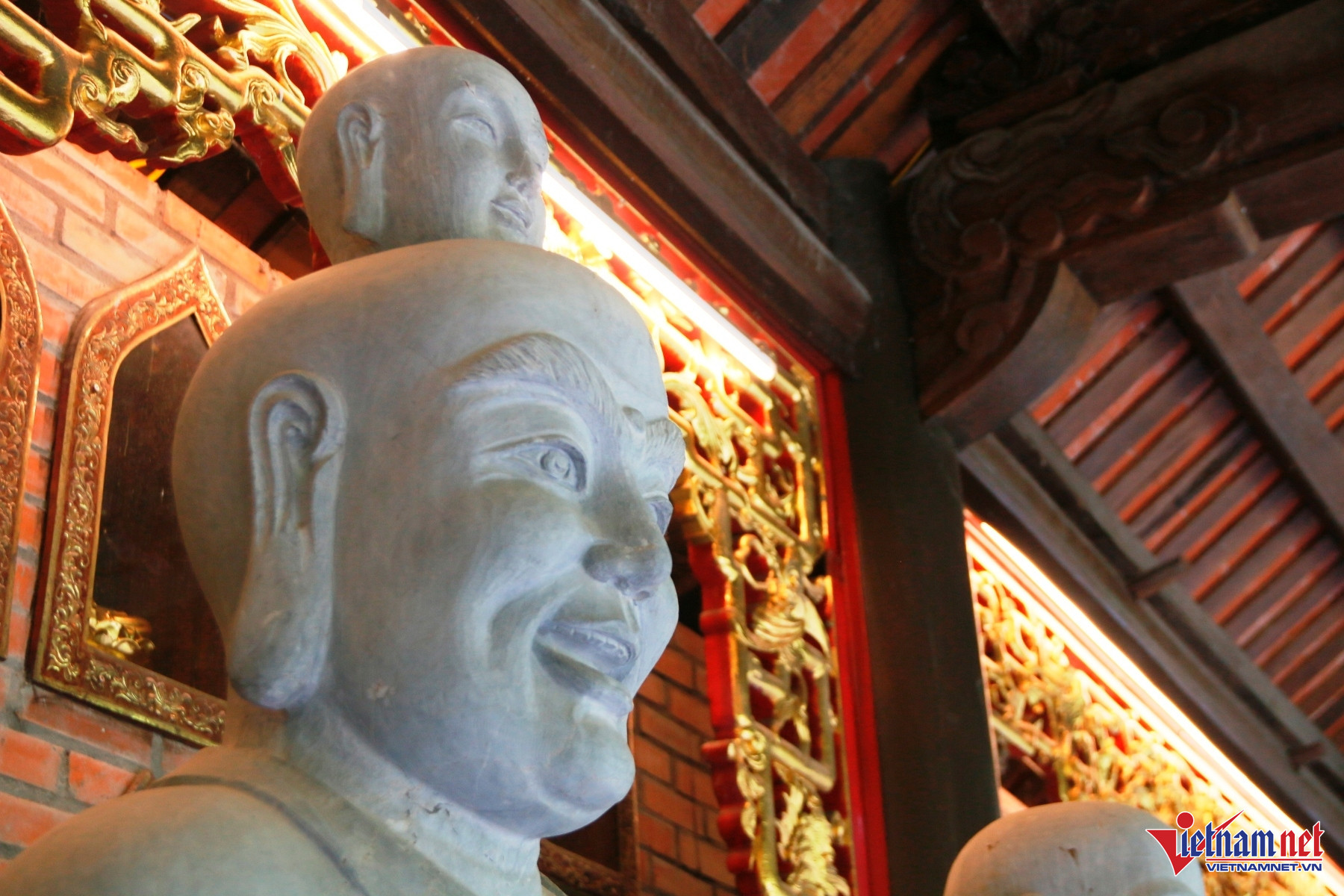The corridor of 500 greenstone Arhat statues at Bai Dinh Temple has been officially recognized as the longest Arhat corridor in Asia.
Stretching 1,700 meters along both the left and right corridors from the Tam Quan Gate leading into the temple, the passage features 500 Arhat statues, each approximately 2.5 meters tall and weighing around 4 tons. Each side consists of 117 compartments with 250 statues, numbered in even and odd sequences to symbolize the balance of yin and yang.
The impressive feat also earned Bai Dinh Temple the title of having the most greenstone Arhat statues in Vietnam.
Arhats, or enlightened disciples of the Buddha, are each uniquely sculpted - with distinct facial expressions, postures, and gestures. No two statues are alike, and each is named and numbered.
According to tour guide Nguyen Hoa Man at Bai Dinh Temple, the statues were carved from monolithic greenstone sourced locally in Ninh Van village (Ninh Binh province) by skilled artisans.
Despite their diversity in form, every statue shares one unifying feature: identical earlobes, symbolizing spiritual wisdom.
Man explained that even-numbered statues represent yang, while odd-numbered ones represent yin. The harmonious layout is intended to reflect the balance of universal forces.
Notably, the first statue on the left side of the corridor depicts Vietnam’s Emperor and Zen master Tran Nhan Tong (1258–1308), the founder of the Truc Lam Yen Tu Zen sect. On the right, the first statue honors Bodhisattva Thich Quang Duc (1897–1963), known for self-immolating in protest of religious persecution.
The origin of the 500 Arhats traces back to India. When the Buddha entered Nirvana, two of his chief disciples convened a council of 500 monks to compile the scriptures - a moment that inspired the creation of these statues.
According to a representative from Ninh Van stone village, the project - initiated in 2004 - involved about 200 master artisans and apprentices working entirely by hand. It took over six months to complete.
Roughly 2,500 tons (800 cubic meters) of greenstone were quarried from Ninh Van for the sculptures, with each block weighing around 5 tons.
To achieve authenticity, the temple’s builders traveled to the Yanshan Publishing House in Beijing to purchase books containing images of the 500 Arhats. The illustrations were enlarged and modeled in plaster for use as sculpture references.
The result is a corridor filled with elaborately crafted statues, each exuding a distinct presence and creating a serene and sacred atmosphere for visitors.
As of today, the corridor at Bai Dinh Temple includes 500 Arhat statues, plus depictions of Emperor Tran Nhan Tong and Bodhisattva Thich Quang Duc.
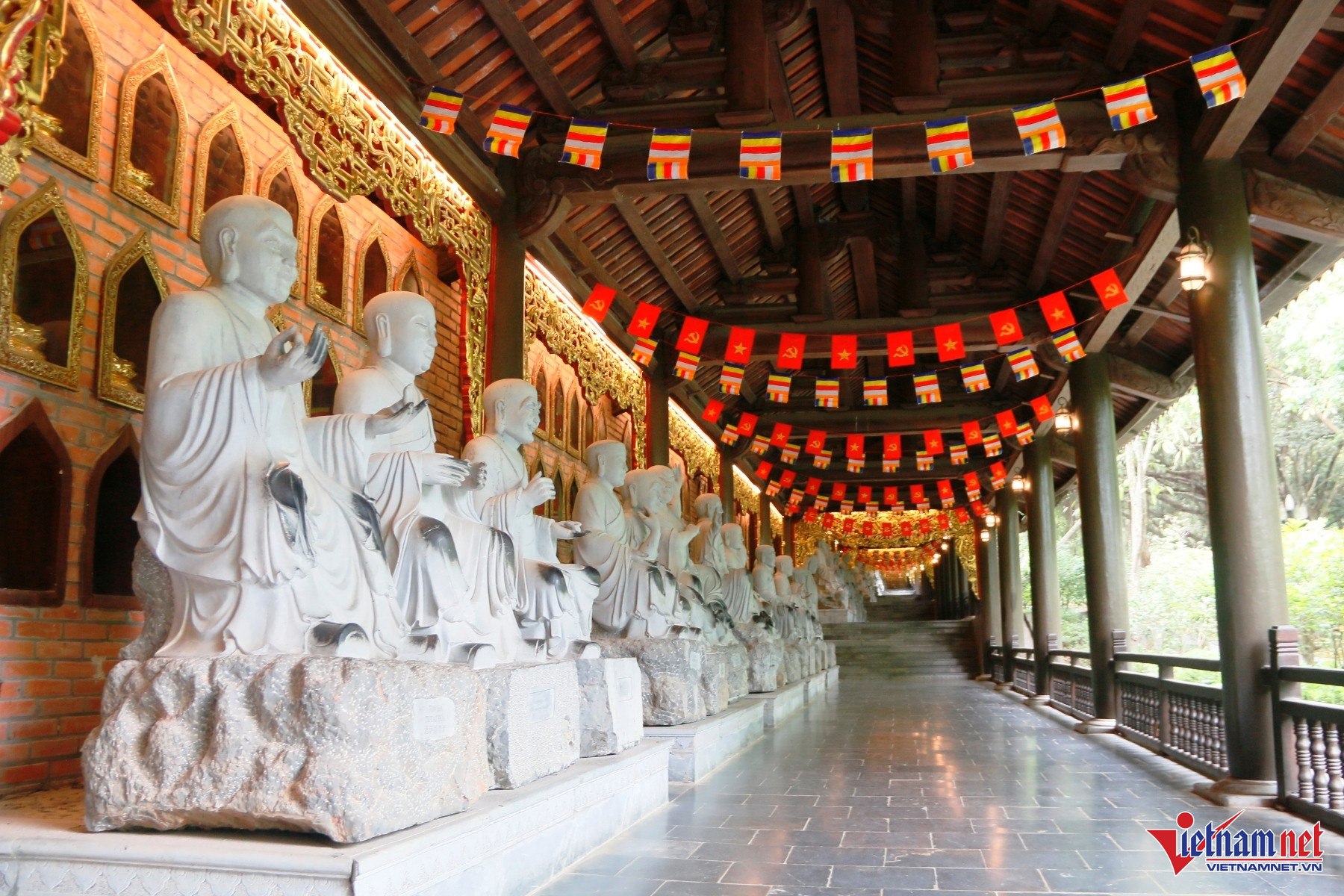
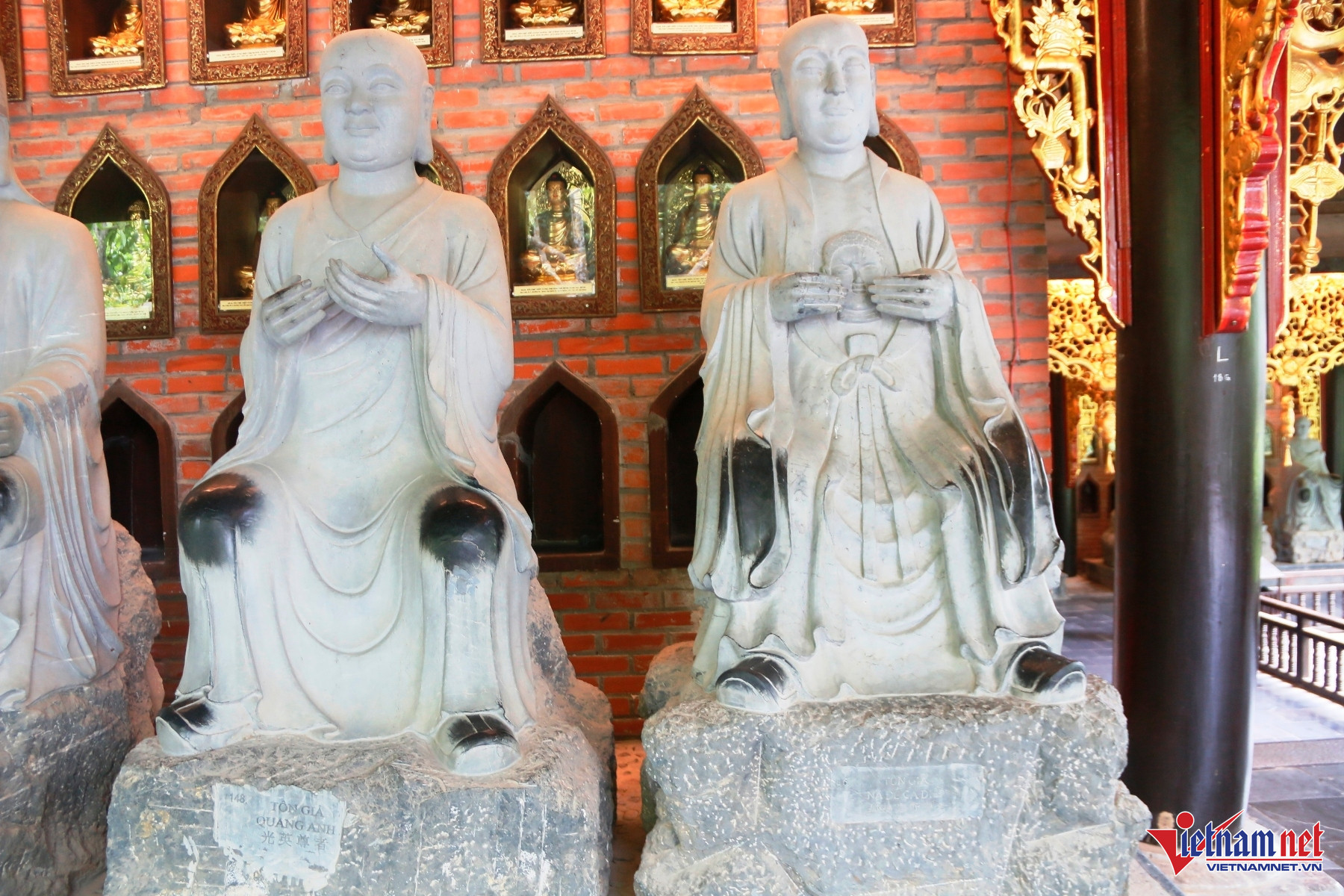
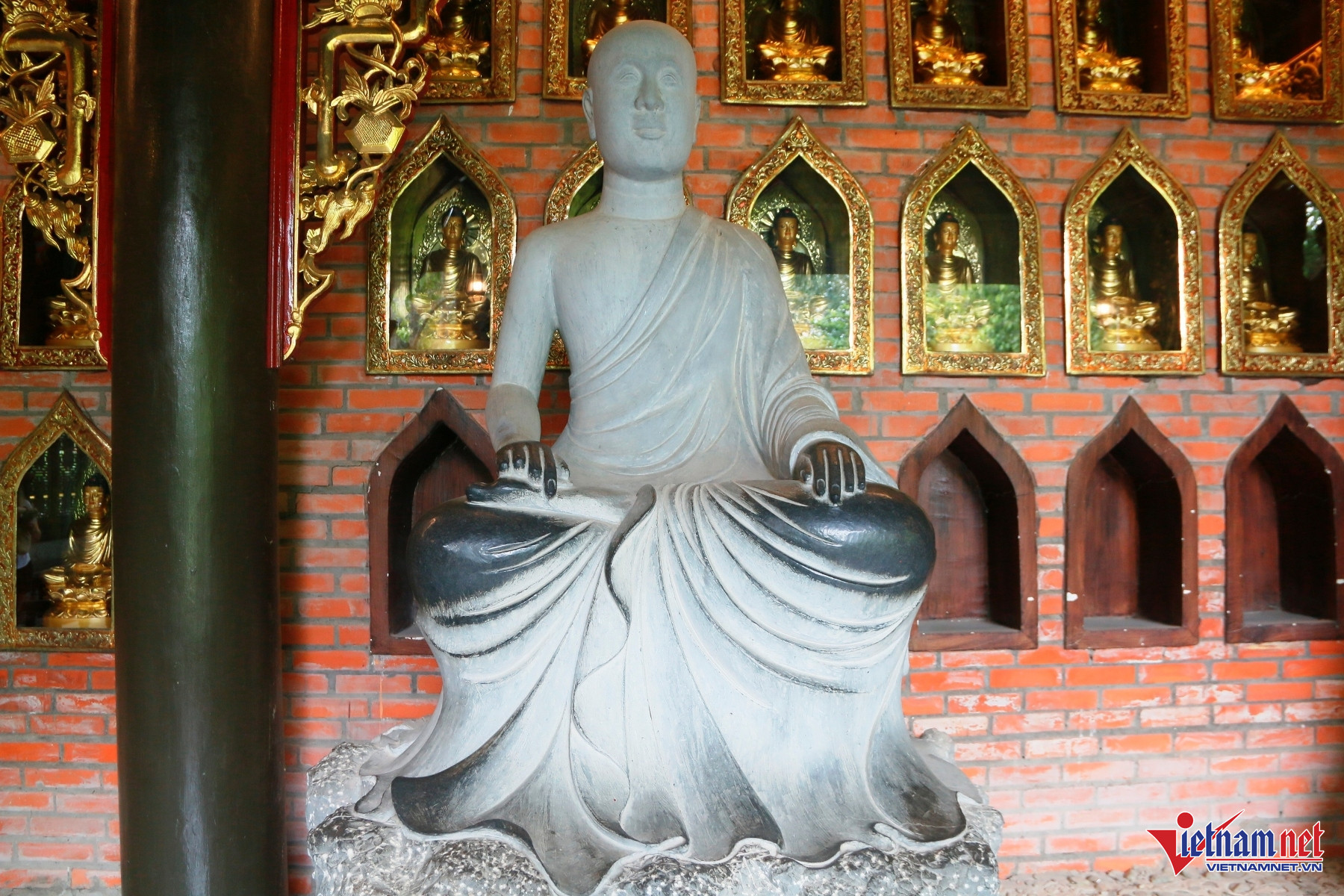
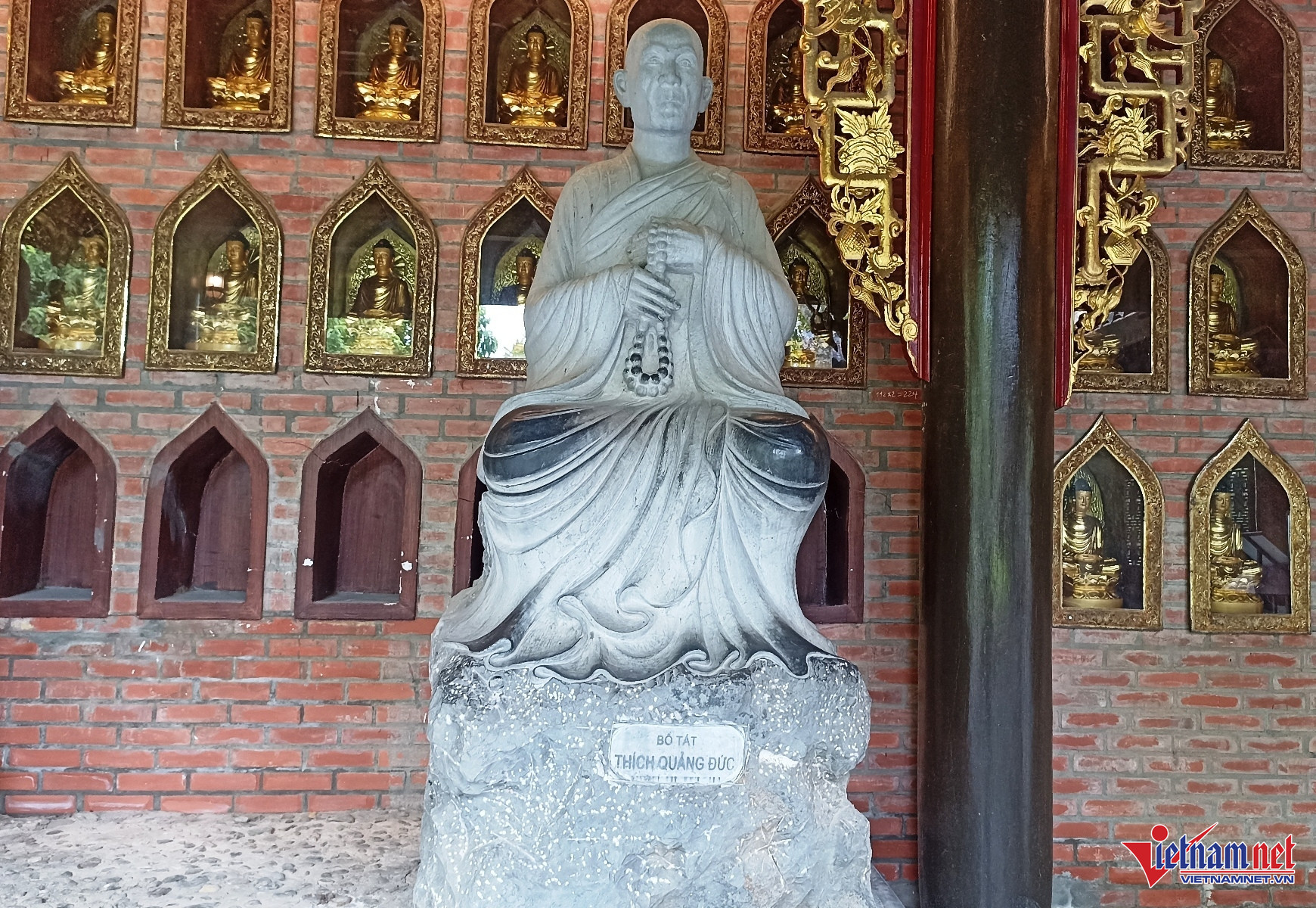
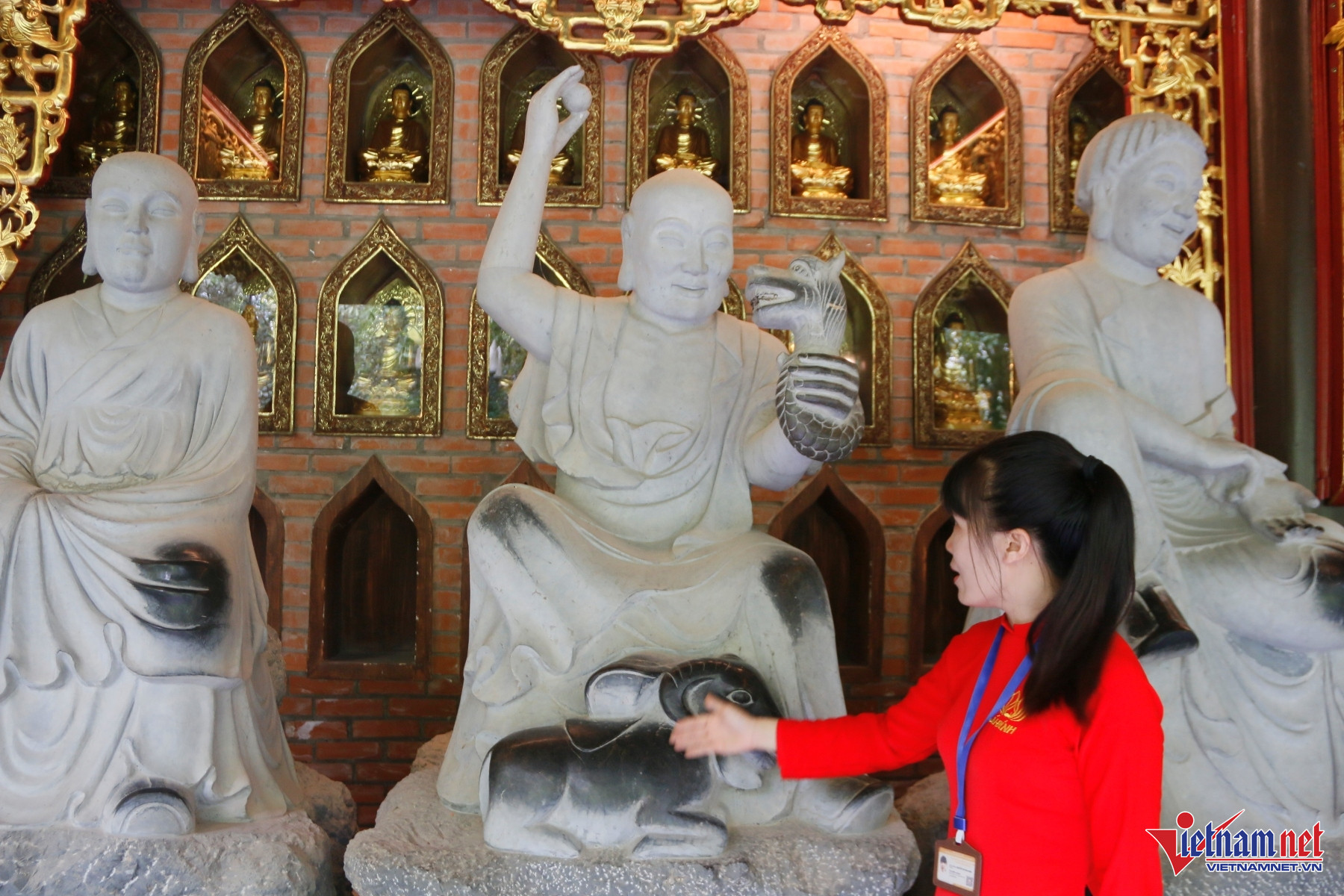
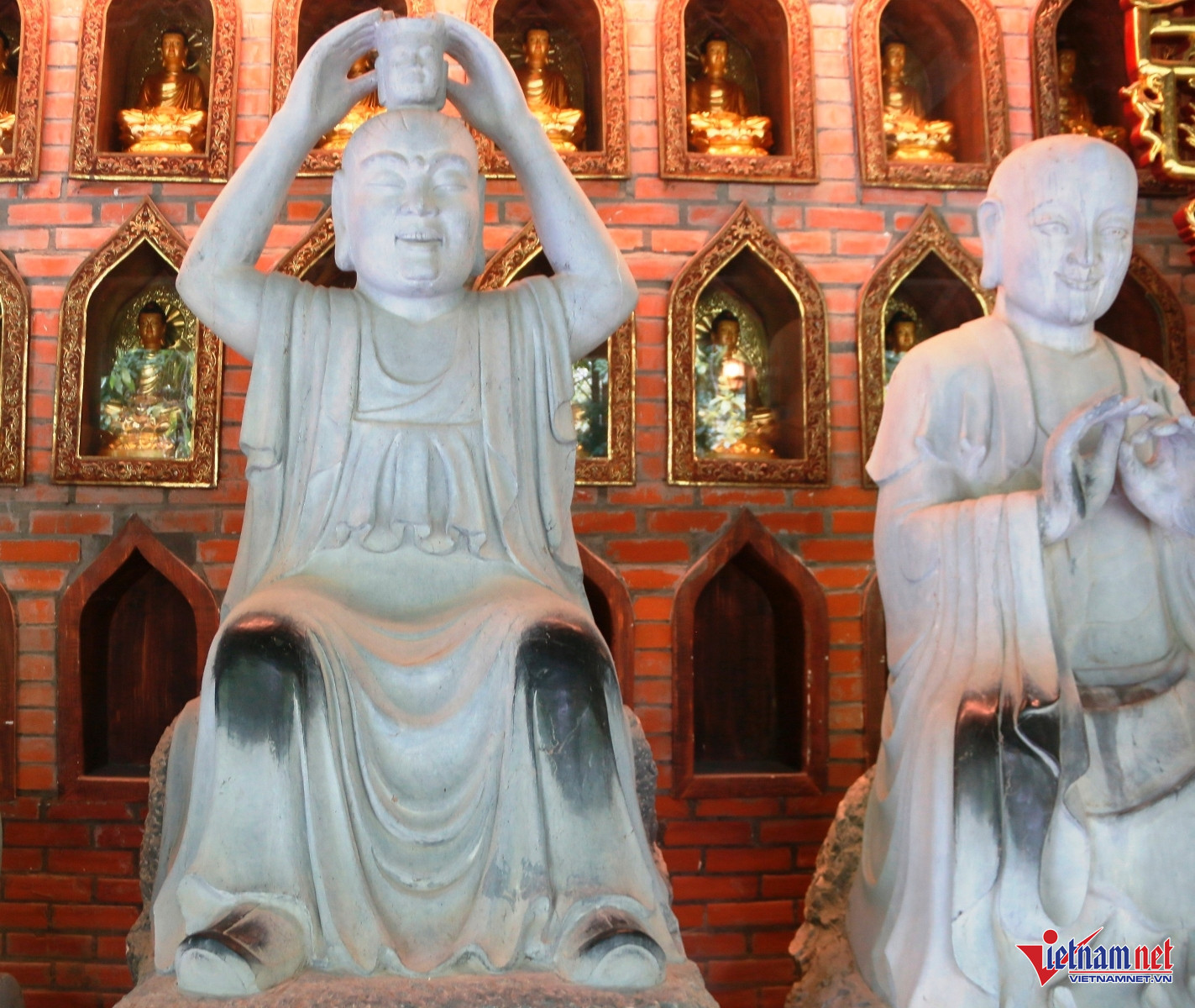
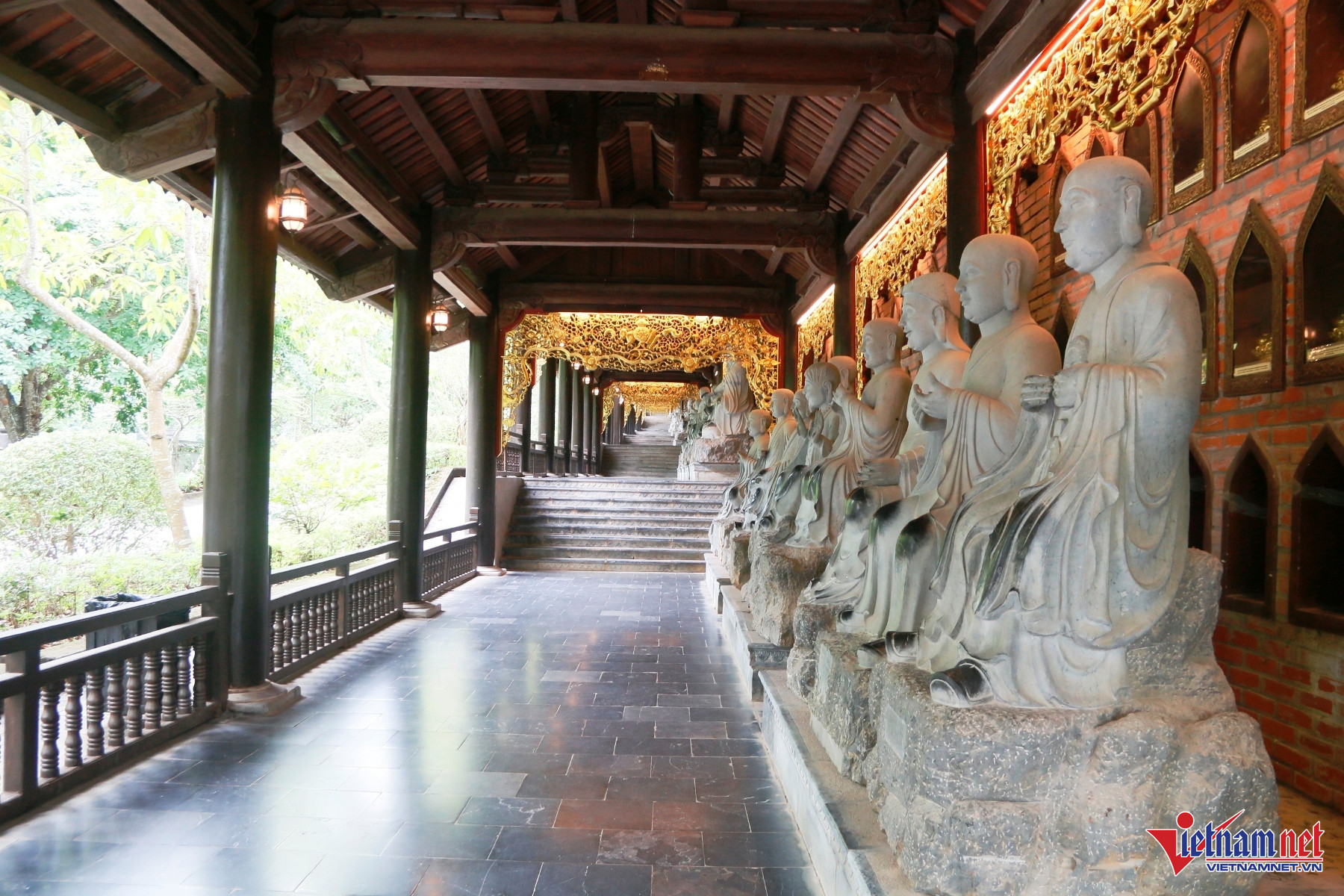
The Arhat corridor at Bai Dinh Temple holds the Asian record for length.
